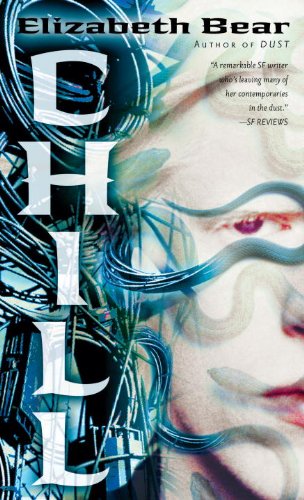Machina ex Deus

There are perhaps many ways to write sequels. Of the two main kinds of sequels, one is where you write different stories, but the characters and setting remain the same and are strung together sequentially. TV series work that way. Many if not most book series do, too. In these cases sometimes you have to read the books in order, but often it isn’t necessary as the characters and setting change little from one book to the next. This is episodic story telling, and it has the advantage that you don’t have to read the whole thing. From the author’s and publisher’s perspective that is also a disadvantage.
But when a story is too long to tell in a single volume, another series arises. This is most common in fantasy, where “epic” is a byword and people carelessly toss around words like “thousands of years” without a thought to what such a span of time really means. But it also happens in science fiction. Asimov’s Foundation series, for example, is a collection of eight short stories, published as a trilogy, a single story in three volumes. Douglas Adams’s Hitchhiker’s Guide to the Galaxy also is a trilogy, even if added books extended the story beyond the original plot. Other examples abound, with stories taking from two to over half a dozen books to tell. They also seem to be getting more common, perhaps because authors and publishers are realizing that a series is a sure fire way to sell more books, because you pretty much have to read them all.
What do you do when you pick up a random book by an author you like, and you discover it’s a continuation of such a series? If you’re like me, you’ll put it back down, dutifully find the earlier books, read those, and then go from there. I happened to pick up Chill by Elizabeth Bear. She has written more than one such series, already, so when I noticed that this book was part two of a series, I debated reading part one, Dust, before reading part two. But I was in an experimental mood, and decided to go ahead with part two without reading part one. (I’ll keep my review sufficiently vague to not spoil part one for you.)
Chill is part of Bear’s Jacob’s Ladder series, so-called because it takes place on the generation spaceship Jacob’s Ladder. The Jacob’s Ladder is a spaceship large enough to contain thousands or even tens of thousands of people, with life support to last for a journey of hundreds of years to the stars.
When the story in Chill begins, it’s the aftermath of some horrendous disaster. The main characters, the survivors, are dealing with the problems caused by the disaster, trying to catch a criminal, and struggling to prevent a worse disaster from happening. Bear describes quite the fanciful world, with enough marvelous creatures and people to drive more than just one story. In Chill they are mostly backdrop to the plot. With only a little resort to flashbacks and expositional references, Bear kept me abreast of events so that I didn’t miss reading part one too much. The ending struck me as a little bit weak, but not so much that the story lost its punch.
I will go back to read Dust, however. The world of Jacob’s Ladder is too much fun to already leave behind. Meanwhile, if you’re looking for a space opera with knights errant and talking carnivorous orchids, here’s a series to try. I suspect there’ll be a part three, but you won’t be sorry for committing to this author, in any event.

0 Comments:
Post a Comment
<< Home